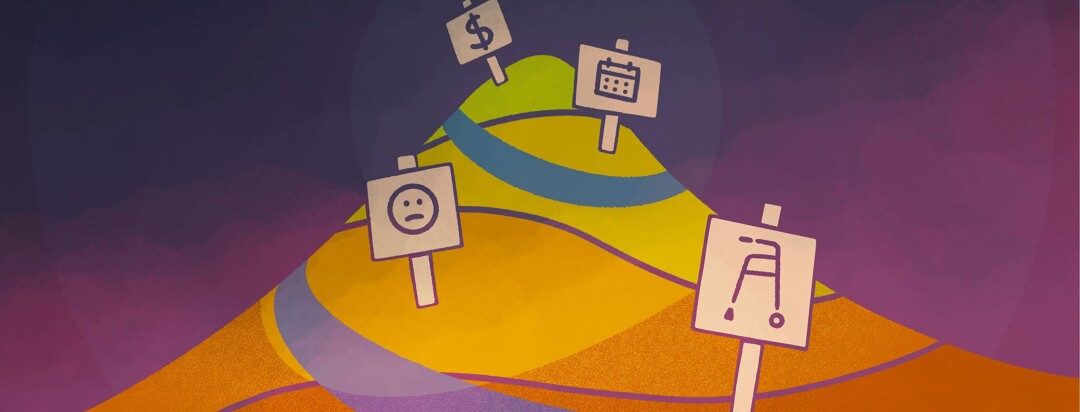Psoriatic Arthritis Flare Recovery Layers: There Are More Than You Think
Wouldn’t it be nice if there was one defining moment of the end of a psoriatic arthritis flare? The funny thing is that I know many people who do not have PsA that assume the flare is over once the pain is reduced. What I would like for them to understand is that there are many layers of PsA flare recovery. Layers that took me years to acknowledge, let alone accept their need to be dealt with.
The psoriatic arthritis flare recovery process differs between patients. In the past, I have likened PsA patients to fingerprints. Each is different due to many reasons, such as genetics and environment. Although our experiences differ, the layers of recovery remain the same.
For many years, I followed the belief that a flare ended the moment my pain lowered from a traumatic to a functional level. I still do, but differently, because I realized that pain was not the only suffering that was taking place.
PsA physical flare recovery
What does it mean to recover from a psoriatic arthritis flare physically? For some, it is simply a reduction in pain. For others, it may involve decreasing pain or an end of a painful yet recurring symptom.
While a reduction of pain is my number one way of determining recovery, so are my abilities. With that said, my need for a wheelchair does not factor into my personal recovery definition. My wheelchair is part of my baseline (my average pain level that, with the use of accessibility products, allows me to function). My crutches, however, are NOT!
My wheelchair covers many debilitating issues created by psoriatic arthritis, fibromyalgia, and endometriosis. Whereas I only use crutches when my knees are flaring. So as the amount of time I require to use crutches decreases so does the severity of my flare.
Pain and using particular mobility aids are just two ways I assess flare recovery. Fatigue is another. Even if my pain level has dropped into what I define as my baseline, the physical portion of the flare is not over if fatigue prevents my ability to perform at my baseline productivity level.
Emotional recovery
I really wish that the only thing we needed to recover from was physical pain. But the trauma that psoriatic arthritis flares inflict also affects us emotionally.
Some feel the emotional effects as soon as the flare hits. They may have had plans disrupted or canceled. Others might not realize the emotional impact of their current flare until after the pain subsides.
There is no right or wrong way to feel about flaring. Personally, I wear my positivity pants for as long as I can. The physical pain already negatively impacts my emotional health, so dealing with the emotions of what I couldn’t do while flaring needs to wait until I am nearing normalcy.
Psoriatic arthritis flares stop us from living like we want or are used to. Each flare brings disappointment. After 21 years, I am not living the life I expected. Instead, I have become accustomed to the modified life that my chronic illnesses demand. Just because I didn’t choose the life I currently have does not mean I don’t or won’t mourn it when it is gone.
Psoriatic arthritis life recovery
If the first two layers of recovery weren’t enough to deal with, the next step is to figure out what can be rescheduled or recovered while easing back into a personal level of normalcy. Reclaiming my life has by far been the most challenging part of my flare recoveries. There is only so much that my body will allow me to do on a daily basis. Including activities, I missed while flaring into my baseline life means putting some basics on hold or eliminating current commitments.
Imagine if life with psoriatic arthritis was a job. While not fun or rewarding like going on vacation or taking maternity leave, another employee would cover flare time similarly. PsA patients don’t always have the luxury of having others who can fill in while they are down and out. And unlike taking one or two vacations a year, we flare too often to expect the same people always to be available.
Financial recovery
The final layer of recovering from a psoriatic arthritis flare involves finances. Ways flares impact our finances besides missed work include but are not limited to the need for additional or new treatments, food delivery, yard care, house cleaning, extra doctor appointments, and other assistive devices.
The sad truth about this recovery layer is that not all PsA patients can recover their financial losses. Without services that could make their lives easier to manage despite their illness, it creates a problematic deficit in all areas to recover from. It isn’t as easy as picking up a few extra shifts or working overtime. For those living on fixed incomes, it comes down to relying on the generosity of others, spending money and figuring out what expenses to cut next month, or doing without services that even healthy people admit they wouldn’t live without.
Which layer do you find to be the most difficult to recover from?
This or That
Do you also find it painful to sit for extended periods of time?

Join the conversation